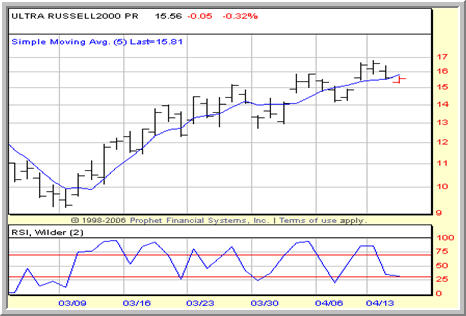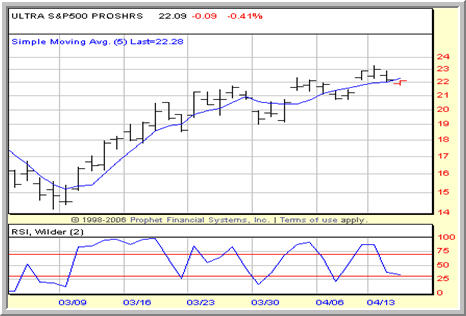What You Need to Know About Trading and Investing in Leveraged ETFs
Depending on whom you ask, leveraged exchange-traded funds (ETFs) like those offered by ProShares, Rydex, Direxion and others are either the greatest thing since sliced bread or the worst thing to happen to the stock market since the publication of Dow 36,000.
But before you know whether leveraged ETFs are for you, it’s a good idea to know just what leveraged ETFs are – and are not. That will make it easier for you to review your own ETF trading and investing strategy to see how leveraged ETFs may be a good fit for you.
Getting to Know Leveraged ETFs
Leveraged ETFs are exchange-traded funds that are built to return 200% or even 300% of the daily return of their underlying benchmark. That benchmark is typically an index representing a market like the Russell 2000 or the S&P 500 or a sector like the Financial, Energy or Technology sectors. 2x or Double Leveraged ETFs seek to return 200%, while 3x or Triple Leveraged ETFs are designed to return 300%.
^UWM^

How do they do this? Leveraged ETFs include among their holdings derivative instruments that help the funds achieve their daily 2x or 3x returns. These derivatives may be swaps, options, futures or other instruments based on the underlying benchmark, and are responsible for what makes leveraged ETFs have their extra get up and go.
But what is most important to remember about leveraged ETFs is this: while there are some ETF families that are considering developing leveraged ETFs that are built to track monthly returns, the vast majority of leveraged ETFs are built based on daily returns.
What does this mean to you as an ETF trader or ETF investor? It means that over the short term, an S&P 500 ETF that is leveraged 2-to-1 to the S&P 500, for example, will produce a return that is very much close to 200%. But in the intermediate and long term, the returns from this same leveraged ETF will be less than 200%. This is in large part because while the daily difference in return between the leveraged ETF and the underlying benchmark is relatively minor, that same difference over the period of a year – or several years in the case of those using leveraged ETFs for long term investment purposes – amounts to a sizable performance shortfall.
What Should You Do with Leveraged ETFs?
^SSO^

In addition to their role in hedging investments in stocks, leveraged ETFs are ideal vehicles for short term trading. In the short term ETF trading, all of the issues mentioned above that appear with long term investing in leveraged ETFs vanish. With holding periods of no more than 5 to 8 days at the maximum, short trading strategies that use leveraged ETFs are a way to take advantage of the best features of these new products, while avoiding the temptation of trying to make leveraged ETFs do something they are not designed to do (at least not yet).
Much of the confusion about leveraged ETFs has to do with too many people trying to treat them the same way they do ordinary, non-leveraged ETFs. Ordinary, non-leveraged ETFs can be a fine option for long term investors looking for lower costs in ETF investing compared to mutual fund investing.
But not all ETFs are created equally. And knowing what your ETF is designed to do – and how it does it – is vital in making ETFs a winning part of your trading and investing strategy.
David Penn is Editor in Chief at TradingMarkets.com.
